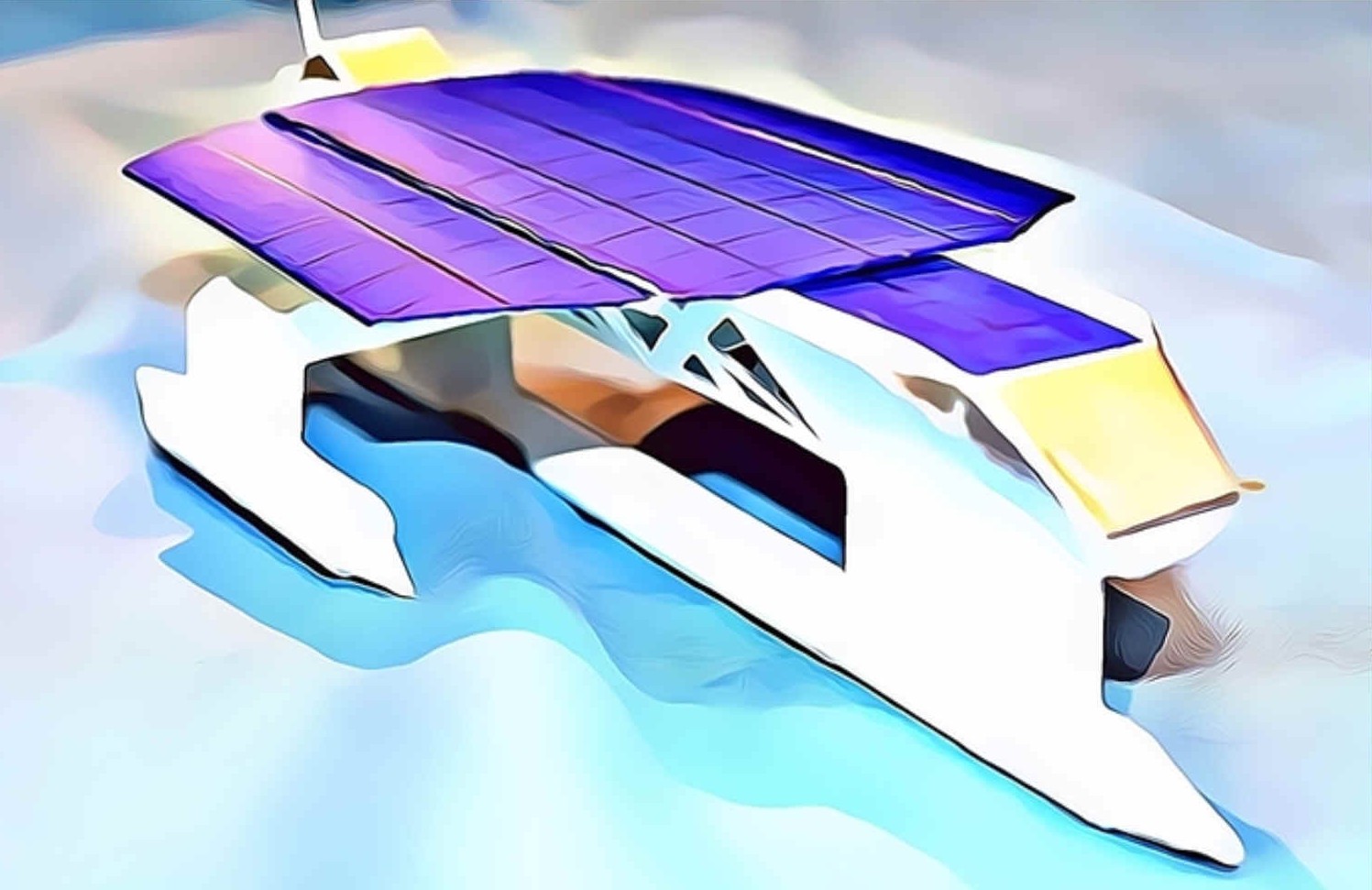|
BATTERIES - ENERGY STORAGE CAPACITY
Please use our A-Z INDEX to navigate this site or return HOME
|
DESIGN WEIGHT - It's very different working in paper and cardboard, compared to marine alloys. We should also consider that our model tests will mostly be conducted in fresh water which is 1 kg/liter as opposed to 1.025 kg/liter for seawater - meaning that the full size vessel will have that advantage also, unless that is the operators intend navigating mainly in rivers.
Getting the balance between battery mass and required energy storage right, is always a compromise, with the most important consideration during early design stages, being the mass of the hull in total, hence the displacement in water - and consequently, the thrust required to drive the vessel.
As a starting point we are allowing for 7 tons of batteries, compared to 12 tonnes in Planet Solar. We may be able to reduce this mass because of wind turbines averaging out times when there is no sun. This is subject to investigation, since it's not been done before.
Then there is the question of storing energy when the batteries are fully charged, For example when in harbour. We are considering carrying a hydrogen battery for this, to allow us to use stored hydrogen gas that may be generated when moored or at anchor.
The racers in the Darwin to Adelaide, Trans-Australia solar car race, had the same problem to overcome. Carry more battery weight for overcast conditions, or run lighter to reduce rolling resistance for a faster vehicle. This race was known as the World Solar Challenge. Not a particularly accurate description, since the cars are/were not traversing the globe, but the competition was open to competitors from every country.
Energy storage in batteries makes up a significant proportion of the mass of the vessel, up to 20%, where during daylight we don't need batteries at all, but we do need them for night running, even where we have wind turbine assistance. Defining a formula for solar and wind powered ships is one of the main objectives of this project.
HULL DRAG - The weight of the hull determines our hull drag - dependent on many variables, such as conversion efficiency. You can see from energy estimates graph, that to reach our 10 knot goal, we need around 27kW of continuous energy across the Atlantic, for which we'd need ideal conditions. A more easily achieved target would be 7.5 knots, requiring 14.5kW continuous. While the present record of 5.3 knots, held by PlanetSolar, could be equaled with just 7.5kW of energy from the sun, if our mass is 36,300kg, for our wave piercing trimaran design.
2. A single central wave piercing hull stabilized by outriggers as a trimaran including:
a) Ultra light superstructure purposed designed to harvest energy from nature via b) and c) below,
b) Solar wings that track the sun and fold for storms, in concert with
c) A turbine generator on a mast that tracks wind conditions and furls for storms.
The theoretical displacement we are working towards is: 30,000 - 45,000 kilograms (target) in 5083
marine grade alloy.
|
|
Please use our A-Z INDEX to navigate this site or return HOME
This website is Copyright © 2021 Jameson Hunter Ltd
|

